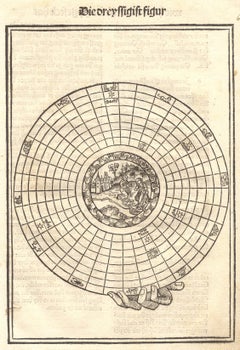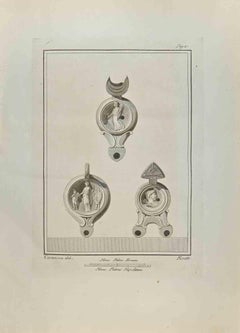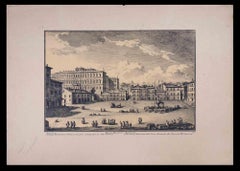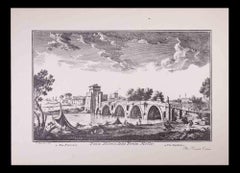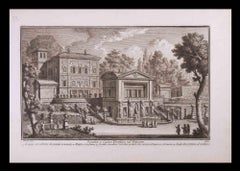Items Similar to Bacchanal
Want more images or videos?
Request additional images or videos from the seller
1 of 10
Giovanni Andrea PodestàBacchanal1649
1649
About the Item
Bacchanal
Etching, 1649
Inscribed in the square left: "Magnificentis/simo Principi/Paolo lorda/no. II Bracci/ani Duci/Aud. P.DDD/1640; Inscribed on right: Rome apud Franciscsum Saluucium
Condition: Usual centerfolds from paper manufacture
Plate: 10 3/8 x 15 1/2"
Sheet: 11 1/2 x 16 1/2";
References:
Bartsch XX.4
Sopher Plate 145
An impression of this image is in the collections of the Philadelphia Museum of Art and the National Gallery of Art, Washington
An exceptionally rich impression in excellent condition.
From Wikipedia, the free encyclopedia
Putti as Allegory of Music
Giovanni Andrea Podestà or Giovanni Andrea Podesta (1608 - c. 1674) was an Italian painter and engraver who was principally active in Rome. His principal subject matter is children playing in landscapes with classical objects. His works show the influence of Poussin's Arcadian landscapes and bacchanals, which were ultimately derived from Titian's bacchanals.
Life
Giovanni Andrea Podestà was born in Genoa. He was formed in Genoa with Giovanni Andrea de Ferrari and Domenico Fiasella according to the information provided by the contemporary Genoese biographer Raffaele Soprani. He is also recorded as an apprentice of Giovanni Battista Paggi in 1627.
His presence is documented from in 1634 in Rome where he made drawings after the statues and ancient reliefs at the famous Giustiniani collection. These were subsequently engraved for publication in the 'Galleria Giustiniani'. The artist's career ran a course similar to that of the young Domenico Fiasella. In Rome his art evolved in contact with the works of Poussin, Andrea di Leone, Pietro Testa and the Flemish artists François Duquesnoy and Karel Philips Spierincks.
In 1650 Podesta became a member of the Accademia di San Luca in Rome. He died in Genoa.
Work
A majority of Podestà's paintings depict children playing amid classical objects in landscapes. Few of his paintings have survived and his work is now mainly known from the etchings he made himself after his compositions. In particular a series of prints published in Rome which date from 1636 to 1661 form an important source of information on his work.
Putti in a Landscape
Podestà made prints after the bacchanals of Titian, which he dedicated to powerful patrons. He dedicated a series of prints to the pleasures of wine to Paolo Giordano Orsini II, Prince of Bracciano. Orsini also owned multiple paintings by Podestà, including two landscapes and seven small paintings of seafood. A Worship of Venus etched after Titian was dedicated to Cassiano dal Pozzo and other prints of bacchanals to Fabio della Cornia. The artist clearly tried tocurry favour with the Barberini family through these dedications.[3] Cassiano dal Pozzo was known for his archaeological interests. Podestà's acquaintance with Cassiano dal Pozzo may have played a role in Podestà’s artistic development and may have put him in the circle of Poussin. This circle included Flemish artists such as the sculptor François Duquesnoy and the painter Karel Philips Spierincks who at one time or the other shared a home in Rome and also had common artistic interests. In this circle there was an interest in Classicism as well as a growing interest and admiration for the bacchanals of Titian. This found expression in copies and reproductions after Titian as well as new compositions inspired by the theme of the bacchanals. The mutual influence of the artists in this circle is clear from the fact that Podestà 's Bacchus and Ariadne (At Arte Antico) cites in the putto who scares another putto with a mask similar figures in a Drunken Silenus of the Flemish painter Karel Philips Spierincks.
The quality of his work and its closeness to the Poussin circle was such that it is often difficult to distinguish his work from compositions by Poussin and Spierincks. His work has considerable charm, a feature sometimes lacking in the work of his more illustrious contemporaries. One scholar noted that 'Although Podestà was neither a great designer nor a great draughtsman, his amusing conceits display the lighter side of the often sober classical devotees in Rome in the 1630s and 1640s.' Although a rather marginal artist, his works depicting putti at play definitely had an influence on late Genoese Baroque painting, such as on the decorative artists of the 'Casa Piola'.
The few drawings by Podesta that have been preserved show features familiar from his etchings: contorted facial expressions, small twisting figures, patches of dark cross-hatching and an interest in still-life. In their precision they are similar to and possibly derived from Sinibaldo Scorza, whose prints may have been an inspiration for Podestà's own etchings.
- Creator:Giovanni Andrea Podestà (1615 - 1674, Italian)
- Creation Year:1649
- Dimensions:Height: 11.5 in (29.21 cm)Width: 16.5 in (41.91 cm)
- Medium:
- Movement & Style:
- Period:
- Condition:
- Gallery Location:Fairlawn, OH
- Reference Number:Seller: FA95541stDibs: LU14014429832
About the Seller
5.0
Recognized Seller
These prestigious sellers are industry leaders and represent the highest echelon for item quality and design.
Platinum Seller
These expertly vetted sellers are 1stDibs' most experienced sellers and are rated highest by our customers.
Established in 1978
1stDibs seller since 2013
748 sales on 1stDibs
Typical response time: <1 hour
Associations
International Fine Print Dealers Association
- ShippingRetrieving quote...Ships From: Fairlawn, OH
- Return PolicyA return for this item may be initiated within 10 days of delivery.
Authenticity Guarantee
In the unlikely event there’s an issue with an item’s authenticity, contact us within 1 year for a full refund. DetailsMoney-Back Guarantee
If your item is not as described, is damaged in transit, or does not arrive, contact us within 7 days for a full refund. Details24-Hour Cancellation
You have a 24-hour grace period in which to reconsider your purchase, with no questions asked.Vetted Professional Sellers
Our world-class sellers must adhere to strict standards for service and quality, maintaining the integrity of our listings.Price-Match Guarantee
If you find that a seller listed the same item for a lower price elsewhere, we’ll match it.Trusted Global Delivery
Our best-in-class carrier network provides specialized shipping options worldwide, including custom delivery.More From This Seller
View AllMarble relief of a trireme from the Temple of Fortuna, Praeneste, from Vasi
By Giovanni Battista Piranesi
Located in Fairlawn, OH
Marble relief of a trireme from the Temple of Fortuna, Praeneste, from Vasi, candelabri, cippi, sarcofagi, tripodi, lucerne, ed ornamenti antichi disegnati ed incisi dal Cav. Gio. Ba...
Category
1770s Old Masters Figurative Prints
Materials
Etching
El Vergponzoso (The Shamefaced One)
By Francisco Goya
Located in Fairlawn, OH
El Vergponzoso (The Shamefaced One)
etching & aquatint, 1799
Unsigned (as are all Goya etchings)
From: Los Caprichos, Plate 54
From the First Edition, printed 1799, on laid paper
Ref...
Category
1790s Old Masters Figurative Prints
Materials
Aquatint
The Garden of Love (after Peter Paul Rubens [1577-1640]
By Christoffel Jegher
Located in Fairlawn, OH
The Garden of Love (after Peter Paul Rubens [1577-1640])
Woodcut diptych, c. 1633-1636
Each of the two sheets is signed in the plate lower right
A posthumous impression with tiny wor...
Category
17th Century Old Masters Figurative Prints
Materials
Woodcut
Father Stefan Fridolin, "Schatzbehalter" (Treasury of the True Riches
Located in Fairlawn, OH
Father Stefan Fridolin, "Schatzbehalter" (Treasury of the True Riches of Salvation): The 30th Figure - Astrological Diagram with Scene of the Nativity
Woodcut, 1491
Unsigned, as issued
Published by Anton Koberger
Diagram has Zodiac signs on outer ring, planets in the lower registers, and Nativity in the center.
Condition: Very good for a 15h century woodcut, with the usual slight age stains
Sheet size: 11 1/2 x 8 1/4 inches
Wogelmut was the teacher of Albrecht Durer and employed young Durer in many project of the last decade of the 15th century.
Michel Wolgemut Biography
Wolgemut trained with his father Valentin Wolgemut (who died in 1469 or 1470) and is thought to have been an assistant to Hans Pleydenwurff in Nuremberg. He worked with Gabriel Malesskircher in Munich early in 1471, leaving the city after unsuccessfully suing Malesskircher's daughter for breach of contract, claiming she had broken off their engagement. He then returned to his late father's workshop in Nuremberg, which his mother had maintained since Valentin's death.
In 1472 he married Pleydenwurff's widow and took over his workshop;[3] her son Wilhelm Pleydenwurff worked as an assistant, and from 1491 a partner, to Wolgemut. Some consider Wilhelm a finer artist than Wolgemut, however he died in January 1494, when he was probably still in his thirties. Wilhelm's oeuvre remains unclear, though works in various media have been attributed to him.
Woodcuts
Michael Wolgemut, Danse Macabre, 1493
Two large and copiously illustrated books have woodcuts supplied by Wolgemut and his stepson Wilhelm Pleydenwurff; both were printed and published by Germany's largest publisher, the Nuremberger Anton Koberger, who was also Dürer's godfather. The first is the Schatzbehalter der wahren Reichthumer des Heils (1491); the other is the Historia mundi, by Schedel (1493), usually known as the Nuremberg Chronicle...
Category
15th Century and Earlier Old Masters Figurative Prints
Materials
Woodcut
Figure Study (From Interior: Evening)
By Stone Roberts
Located in Fairlawn, OH
Signed and numbered by the artist
Edition: 25
Printed on Hahnemuhle paper
Published by Neptune Fine Arts
Condition: excellent
Plate/Image size:
Sheet size:
"Stone Roberts’ luminous still lifes, private interiors, and large-scale panoramas of figures in motion invite us to look—and then look some more—and relish in the sensuality of the three-dimensional world. While Roberts’ varied influences include Greek Mythology and Roman Classicism, Dutch and Spanish Old Masters, Fantin-Latour, Ingres, and Balthus, his subjects are decidedly of today. From Grand Central Terminal to his wife gardening in Stonington, Connecticut, Roberts paints people and places from his personal surroundings into formal compositions that often appear to have mythical, literary, or psychological elements. Roberts received his B.A. from Yale University, New Haven, CT, where he studied painting with William Bailey, and his M.F.A. from the Tyler School of Art, Philadelphia, and Rome.
Roberts' work can be found in numerous public and private collections throughout the United States and Europe, including the collection of The Metropolitan Museum of Art and the Louis-Dreyfus Family Collection, New York.
A solo exhibition of Stone Roberts’ work was held at the Museum of the City of New York in 2012 entitled Stone Roberts: New York City Paintings." Courtesy of Hirschl & Adler Modern
PUBLIC COLLECTIONS
Asheville Art Museum, Asheville, NC
Sydney and Walda Besthoff
Biltmore Estate, Asheville, NC
Mrs. Robert Carroll
Mr. and Mrs. Willam Cecil
Chase Manhattan Bank, New York, NY
Evansville Museum of Arts and Sciences, Evansville, IN
Jerald Dillon Fessenden
Flint Institute of Arts, Flint, MI
Ms. Barbara Goldsmith
Mrs. Paul Gottlieb
Mr. and Mrs. Graham Gund
Mr. and Mrs. Arie L. Kopelman
Alex S. Jones
William Louis-Dreyfus
Mr. and Mrs. James C. Marlas
J.D. McClatchy and Chip Kidd
Mr. and Mrs. Richard L. Menschel
The Metropolitan Museum of Art, New York, NY
Mrs. Stephen Paine
Mr. and Mrs. W.J.W.J. van Roijen
Mrs. Julius Rosenwald II
Mark Singer
Carl Spielvogel and Barbaralee Diamonstein-Spielvogel
Bruce Springsteen and Patti Scialfa
Stephens Inc., Little Rock, Arkansas
Woodberry Forest...
Category
20th Century American Realist Figurative Prints
Materials
Etching
Au bord de la mer (At the Sea Side)
By James Jacques Joseph Tissot
Located in Fairlawn, OH
Au bord de la mer (At the Sea Side)
Etching and drypoint, 1880
Signed in the plate middle left edge (see photo)
Edition: c. 100
A very rich impression, full of burr and contrasts
Pri...
Category
1880s Impressionist Figurative Prints
Materials
Etching
You May Also Like
Ancient Still Life 9 - Etching by Nicola Fiorillo - 18th Century
Located in Roma, IT
Still Life from "Antiquities of Herculaneum" is an etching on paper realized by Nicola Fiorillo in the 18th Century.
Signed on the plate.
Good conditions with some folding and foxi...
Category
18th Century Old Masters Still-life Prints
Materials
Etching
Palazzo Barberini - Etching by Giuseppe Vasi - Late 18th Century
By Giuseppe Vasi
Located in Roma, IT
Palazzo Barberini is an original black and white etching of the Late 18th century realized by Giuseppe Vasi.
The beautiful etching represents a glimpse of Rome.
Signed and titled o...
Category
Late 18th Century Old Masters Figurative Prints
Materials
Etching
Ponte Milvio - Etching by Giuseppe Vasi - Late 18th Century
By Giuseppe Vasi
Located in Roma, IT
Ponte Milvio is an original black and white etching of the Late 18th century realized by Giuseppe Vasi.
The beautiful etching represents a glimpse of Rom...
Category
Late 18th Century Old Masters Figurative Prints
Materials
Etching
Giardino e Casino Pontificio - Etching by Giuseppe Vasi - Late 18th Century
By Giuseppe Vasi
Located in Roma, IT
Giardino e Casino Pontificio is an original black and white etching of the Late 18th century realized by Giuseppe Vasi.
The beautiful etching represents a glimpse of Rome.
Signed ...
Category
Late 18th Century Old Masters Figurative Prints
Materials
Etching
Monastero e Chiesa dei SS. Domenico - Etching by G. Vasi - Late 18th Century
By Giuseppe Vasi
Located in Roma, IT
Monastero e Chiesa dei SS. Domenico is an original black and white etching of the Late 18th century realized by Giuseppe Vasi.
The beautiful etching represents a glimpse of Rome.
...
Category
Late 18th Century Old Masters Figurative Prints
Materials
Etching
Palazzo Pontificio - Etching by Giuseppe Vasi - Late 18th Century
By Giuseppe Vasi
Located in Roma, IT
Palazzo Pontificio is an original black and white etching of the Late 18th Century realized by Giuseppe Vasi.
The beautiful etching represents a glimpse of Rome.
Signed and titled ...
Category
Late 18th Century Old Masters Figurative Prints
Materials
Etching
Recently Viewed
View AllMore Ways To Browse
Old Lighters
Statues Rome Antique
Wine 17th
17th Century Putti
Andrea Rich
Putto Baroque
Bacchus Mask
Putti Drawing
Venus Antique Statue
3 Children Statue
Ariadne Statue
Prince Lighter
Ferrari Statue
Leone Statue
Ferrari Lighter
Pablo Picasso Poster For 1980 Moma Exhibition
Pablo Picasso Raphael Et La Fornarina
Parapluie Revel


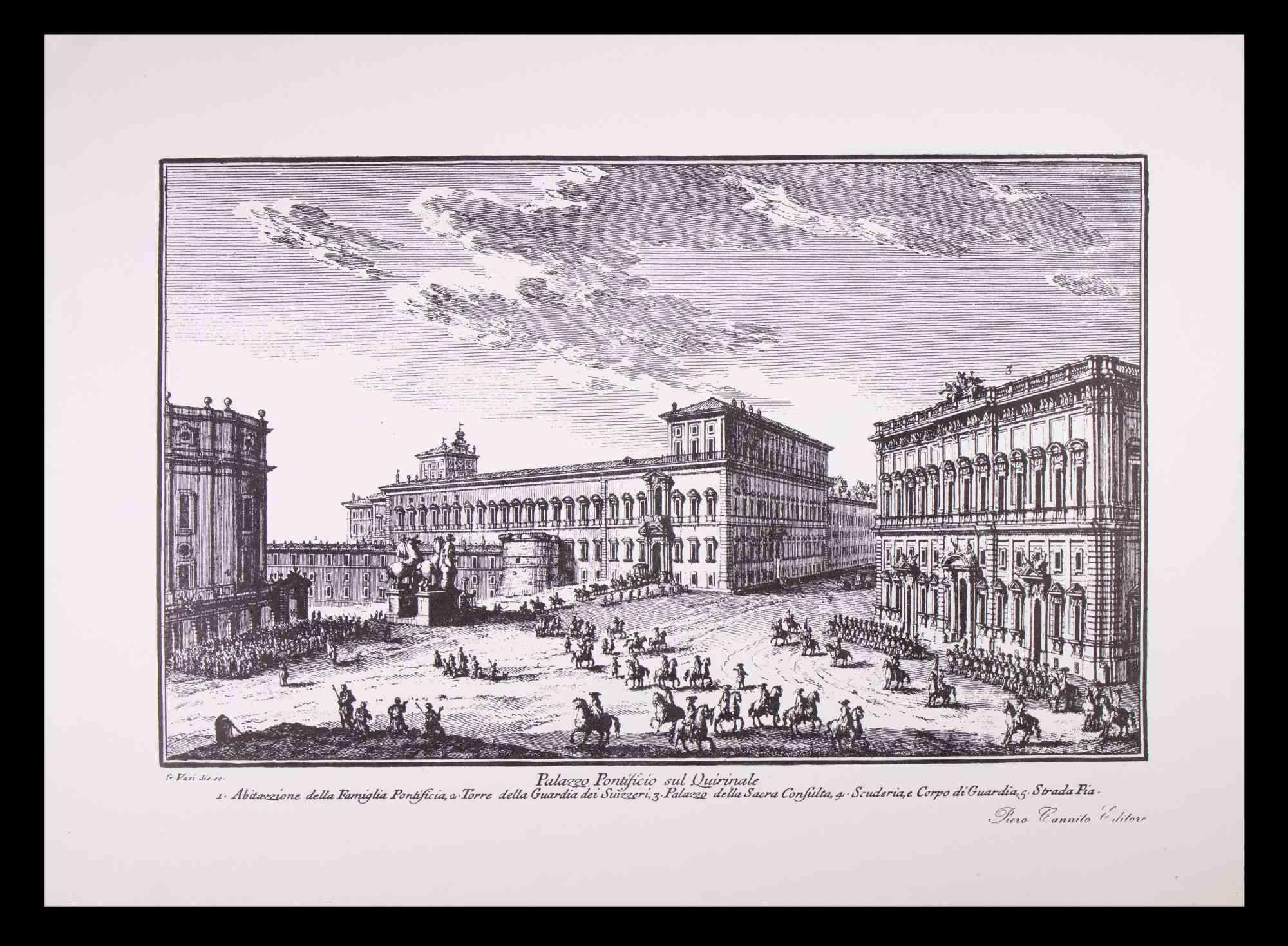
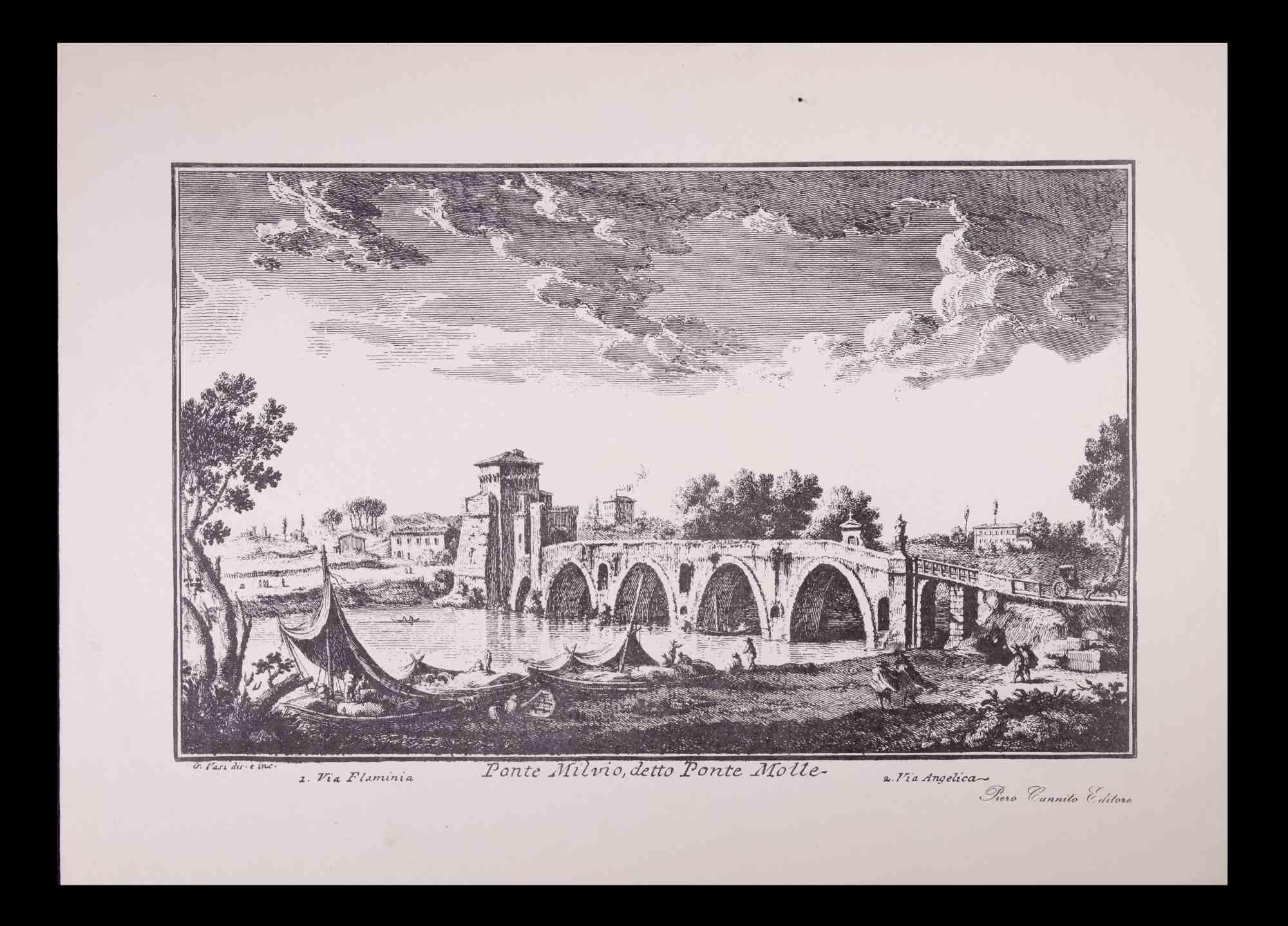
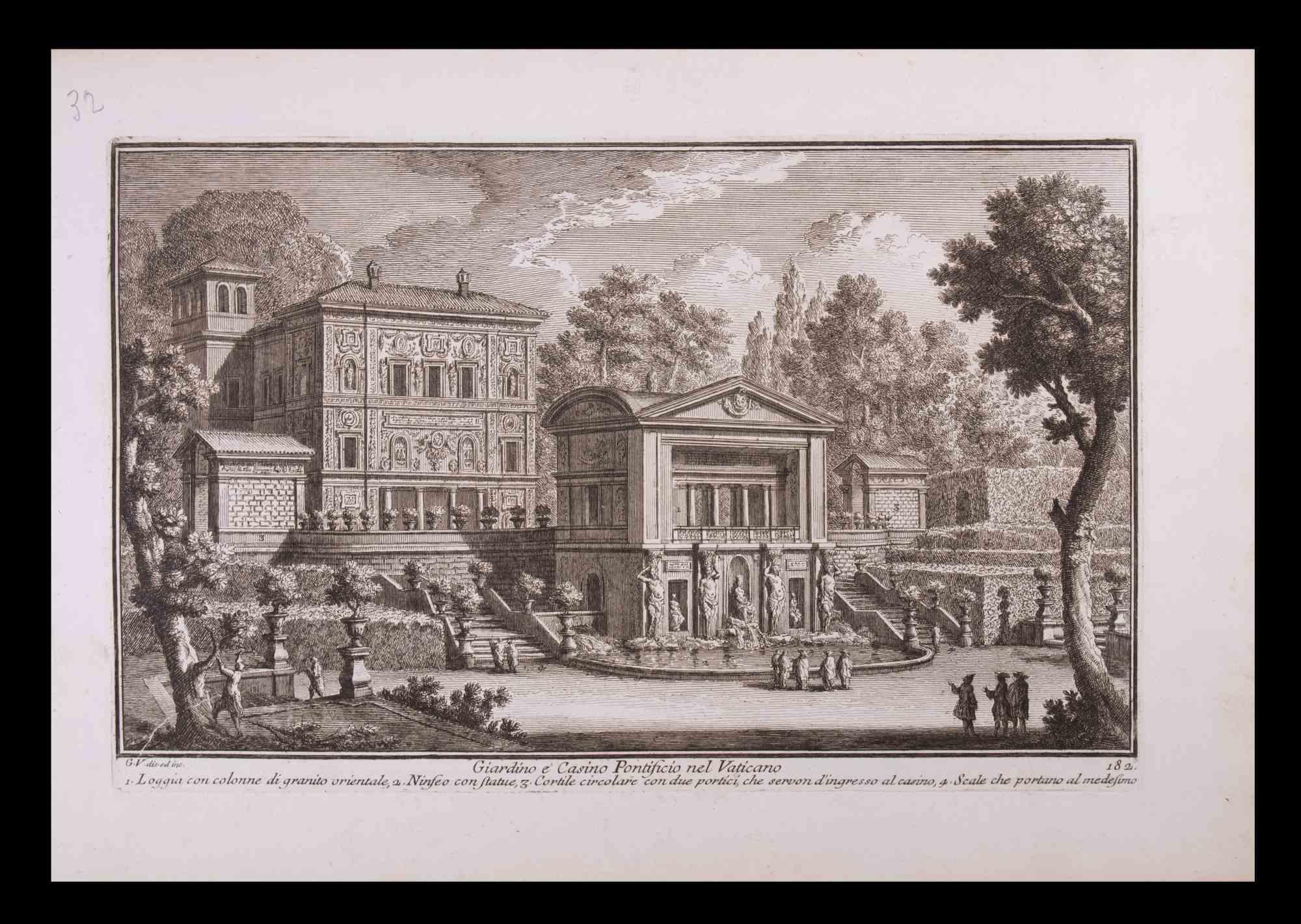
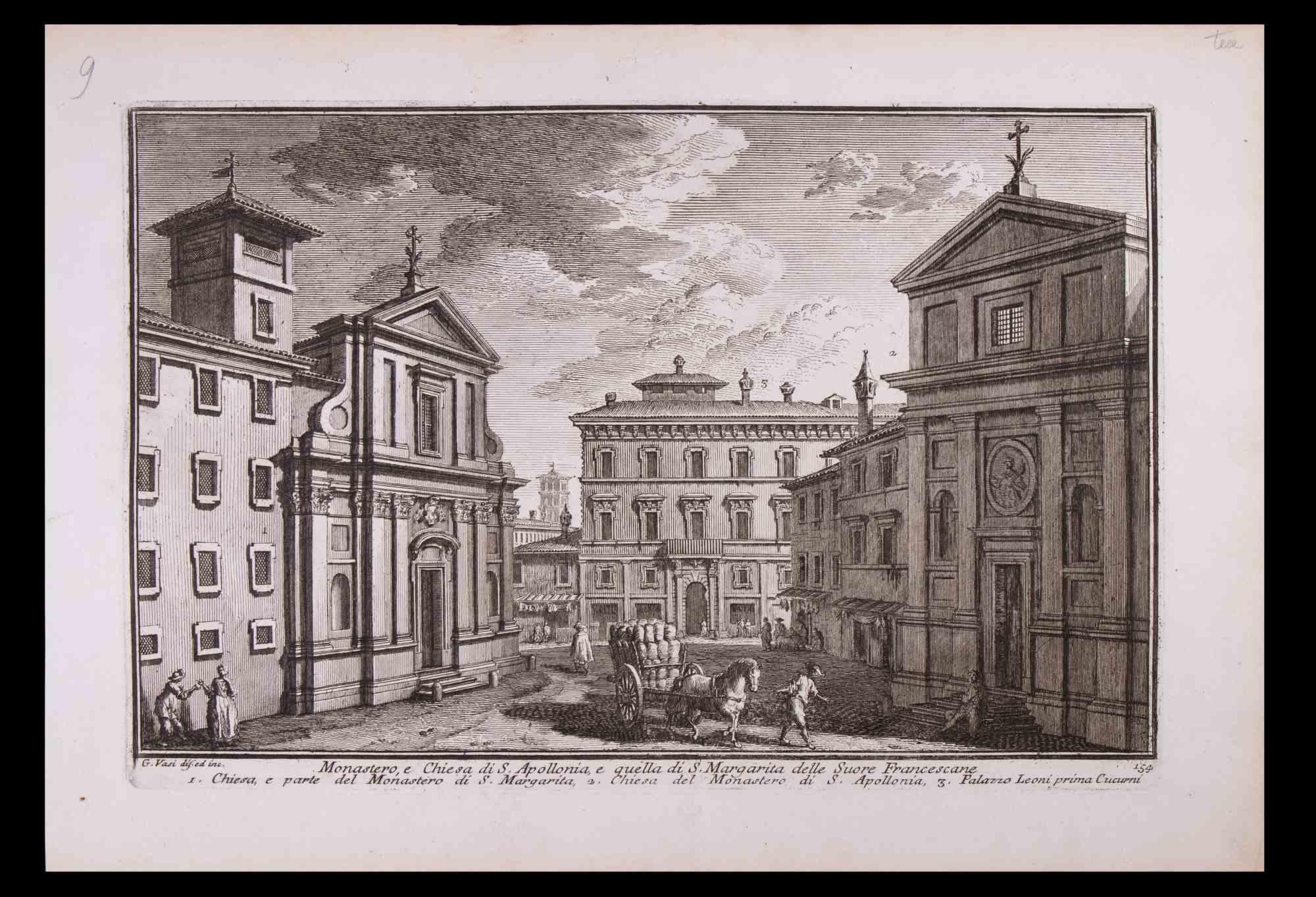
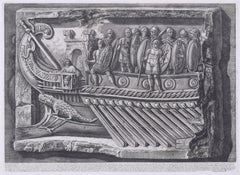
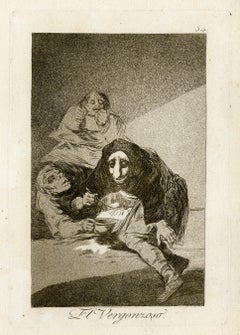
![The Garden of Love (after Peter Paul Rubens [1577-1640]](https://a.1stdibscdn.com/christoffel-jegher-1596-1652-3-netherlands-prints-works-on-paper-the-garden-of-love-after-peter-paul-rubens-1577-1640-for-sale/a_140/a_147163221719706543029/FA1849_montage_master.jpg?width=240)
